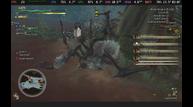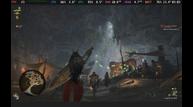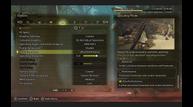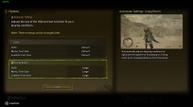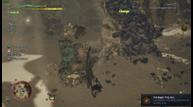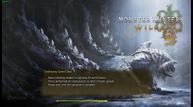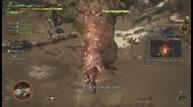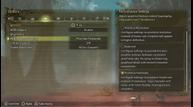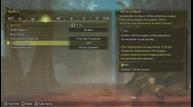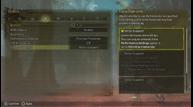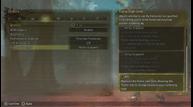
Monster Hunter Wilds Is Unplayable on Steam Deck, Barely Playable on ROG Ally, but Good via PlayStation Portal
Monster Hunter Wilds is finally releasing worldwide this week for PlayStation 5, Xbox Series X, and PC (Steam). Ahead of its launch, I've been playing all three versions of the game for coverage purposes. For today's article, I'm focusing on the Steam version played on my Steam Deck and ROG Ally and also the PlayStation 5 version played on my console and my PlayStation Portal. While the warning signs were already there during both open betas and the PC benchmark, I still had some hope for the full game being better-optimized for PC handhelds. I'm going to cover how the PC version in its most current build scales on both my handhelds, and also how I've been enjoying the game streamed locally from my PS5.
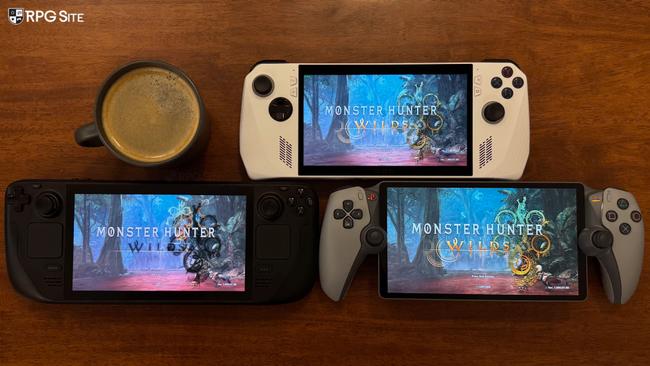
Monster Hunter Wilds Steam Deck impressions from the latest full game build
When I first tried Monster Hunter Wilds on Steam Deck through the initial open beta, it was unplayable with sub 20fps performance at the absolute lowest settings. Even when enabling Frame Generation, it never felt good to play. The second beta had similar issues, and when I tried the PC benchmark, I was almost certain Monster Hunter Wilds would not be a good experience on Valve's handheld. After getting access to the final game for working on guides and other features, I was curious to see how it would feel.
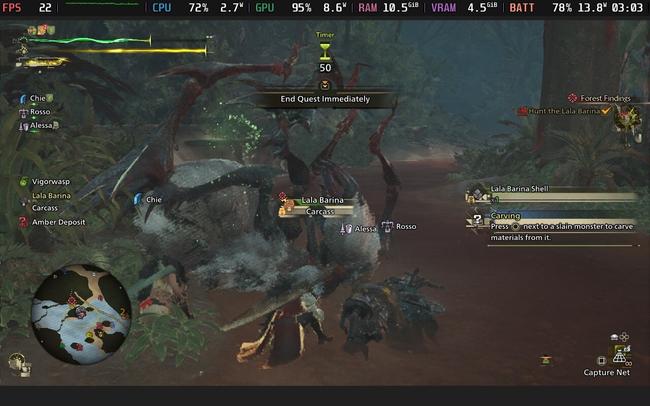
When launching it for the first time, it took about 15 minutes to get done with optimizing (compiling shaders). After that, the title screen's logo for Monster Hunter Wilds didn't load correctly. The gold portions were black as you can see in the opening image of this article. I retested the game across Proton Experimental (bleeding edge), GE-Proton9-25, and the default Proton version on Steam Deck with no luck. Beyond that, the d-pad didn't work correctly for menu navigation and the game sometimes didn't recognize inputs correctly, requiring use of the touchscreen or a mouse. I fixed this by using Capcom's official layout for use with the PlayStation 5 controller rather than the default for Steam Deck.
Once I got into the actual game and loaded up my character, it was clear that even with the latest PC build, Monster Hunter Wilds is unplayable on Steam Deck. Just exploring maps like the Scarlet Forest without any sort of action on screen results in sub 20fps gameplay with the game running at 720p while using FSR 3 Ultra Performance, all the graphics options at their absolute lowest possible settings, and Frame Generation disabled. Frame Generation introduces some latency, but using it when your source frame rate is almost always below 20fps is never going to be a good experience. Sure, the number on the frame rate counter is in the 40s or even higher, but it feels awful to play.
One thing to note is that even some in-game assets don't load correctly like the Begin Quest or Quest complete screens. Some backgrounds or assets when you aim your slinger and gather items also seem bugged on Steam Deck.
A positive so far is that cross platform multiplayer does work on Steam Deck. I tested this across platforms with both the PS5 and Steam versions on Steam Deck working fine with friends and randoms.
Based on how it plays right now, I don't think Monster Hunter Wilds will ever get to a playable state on the current Steam Deck. I don't consider a game running below 20fps at the absolute lowest settings (with heavy upscaling) in the early game during less intense moments as playable by any means. I know this is disappointing news, but don't bother wasting time trying to play Monster Hunter Wilds natively on Steam Deck right now.
If you do have a more powerful desktop PC or laptop at home, I recommend playing it there or streaming it from there to your Steam Deck if you have a good local network setup like the one I cover below for PlayStation Portal.
Monster Hunter Wilds Steam Deck recommended settings
There isn't much to say for Monster Hunter Wilds Steam Deck recommended settings right now as you can see. If you do want to play Monster Hunter Wilds on Steam Deck, make sure to change the controller configuration so it uses one of the three Capcom has added assuming you run into the input issue I had. Since I prefer DualSense button prompts, I enabled Type 3 button icons on the third page of the Control options. After this, I recommend using Type 2 for button configuration since I found that setup works better in general even on PS5 and Xbox for hunts. One more setting I recommend changing is audio levels so that BGM is at 100 and the others are at 80 or lower. The game's audio mix is a bit weird where the music sounds too soft. Adjusting the sliders was also something I did on console to fix the issue.
When it comes to graphics, I recommend disabling HDR in-game on Steam Deck and then playing with the game set to 800p (it still is a 16:9 game rendering at 720p), capping the frame rate to 30, enabling FSR 3 or XeSS (there isn't a huge performance difference) and using the Ultra Performance upscaling mode. Set the other options as shown in the gallery above to their absolute lowest settings or disabling effects when possible. That's all you can do for Monster Hunter Wilds on Steam Deck right now. It isn't a good experience, but I hope the control and audio recommendations I have help you out when you play on PC and console.
Monster Hunter Wilds ROG Ally impressions
Moving over to the ROG Ally, the initial launch took about 16 minutes to optimize (build shaders). There has been an update since and it took about 26 minutes for the optimizing screen since. My handheld is set to 5GB VRAM and I did my testing in the 25W and 30 W turbo modes. I didn't test the 15W mode because performance isn't great even on the 25W mode. Overall, the ROG Ally delivers a much better experience than Steam Deck, but I would consider it barely playable.
While I have seen people test on medium or a mix of medium and low, I opted to run the game at 720p on the lowest possible settings and also use FSR 3 Ultra Performance. Even with this setup, it drops below 30fps during exploration to the mid 20s in the 25W mode. While I don't have the ROG Ally X to test it myself, I've heard from a colleague that it holds 30fps better on that. If you have a normal ROG Ally Z1 Extreme model, I would say it has the potential to get to a decent state if Capcom optimizes the game through updates.
Moving over to the 30W mode (only possible when the handheld is plugged in), things are a lot better. In the five hunts I tested online and offline in the early hours of the game, it held 30fps rather well. I had some drops to the high 20s, but didn't see the game drop below 28fps at all. You could try Frame Generation here since it will be in the 50s, but I opted not to use that. I only really like Frame Generation if the game holds 30fps or more.
If you want to play on your ROG Ally, I recommend playing in tabletop mode with it plugged in and using the 30W turbo mode preset. With this, you will get a playable experience which holds 30fps very well early on, but it will not be a pleasant-looking experience. There are also UI issues that affect the game on smaller screens so keep all of that in mind. The ROG Ally can be a decent way to knock out some exploring and gathering on maps during a commute (battery life issues aside) though.
Note that I haven't tested the later portions of the game I can't talk about yet due to embargo restrictions. I will be revisiting the game on both handhelds after updates if things improve as well.
Monster Hunter Wilds PS5 version on PlayStation Portal is a good experience
Before getting into how Monster Hunter Wilds' PS5 version plays on PlayStation Portal, I want to remind you of how I have the network and console set up at home. My PS5 is wired to my router and my PlayStation Portal uses the 5Ghz wireless band at home. With this setup, I've had almost no issues streaming PS5 games to my PlayStation Portal. For Monster Hunter Wilds, I enjoyed the 40hz mode on PS5 when playing on the actual console connected to my 1440p monitor, but when you stream to your PlayStation Portal or even any other device using Remote Play, I recommend using the 60fps mode for the best experience.
For Monster Hunter Wilds, this drops the internal resolution to 1080p according to Capcom, but the PlayStation Portal's screen is also 1080p. Having a 60fps game streamed also means the added latency via streaming isn't going to be a huge issue versus streaming in the 30 or 40fps mode which would have added latency. Speaking of the PS5 modes, I've included screenshots of all the frame rate cap, resolution, and 120hz options included on base PS5 below:
With all that out of the way, the reason I enjoyed Monster Hunter Wilds on PlayStation Portal the most, is the full DualSense haptics experience. While Monster Hunter Rise was a native PS5 release, it didn't do anything of note with the controller aside from the bare minimum. With Monster Hunter Wilds, Capcom has done a great job using the controller speaker for UI interactions and even capturing endemic life. The haptics are used for Monster roars, weapon attacks, and even sound effects in cut-scenes.
While I spent most of my time on console playing on my 1440p display, I've played at least 20 hours on the PS portal over the last few weeks, and I only had one instance of the quality degrading because of some network issues. If you have a PlayStation Portal setup at home that works well, I definitely recommend giving Monster Hunter Wilds a go on it with the game on PS5 set to the 60fps mode. The DualSense haptics added in-game are lovely. I'm well into the endgame of Monster Hunter Wilds on PS5 and I've managed putting more time into it pre-release than I did both World and Rise ahead of launch. That's all I can say about it right now.
Monster Hunter Wilds is now available worldwide on PlayStation 5, Xbox Series X|S, and PC (Steam). Check out all our Monster Hunter Wilds coverage here including James' review here.






